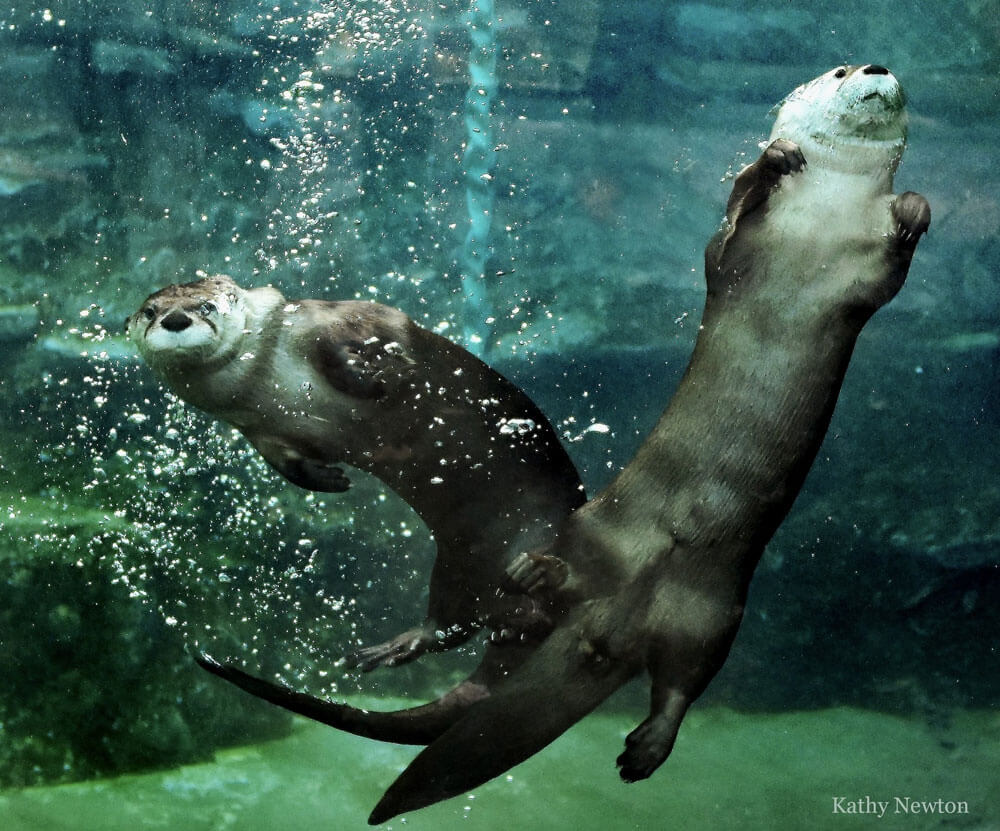Things are Heating up in Cincinnati Zoo’s Polar Bear Exhibit
 CINCINNATI, OH (December 20, 2016) – It’s freezing in Cincinnati but steamy in the Cincinnati Zoo & Botanical Garden’s polar bear exhibit where Anana, the Zoo’s new female, and long-time-resident male Little One are getting to know each other. Since Anana’s arrival a few weeks ago, the two bears have been close enough to smell each other but today is the first time they’ve had actual contact.
CINCINNATI, OH (December 20, 2016) – It’s freezing in Cincinnati but steamy in the Cincinnati Zoo & Botanical Garden’s polar bear exhibit where Anana, the Zoo’s new female, and long-time-resident male Little One are getting to know each other. Since Anana’s arrival a few weeks ago, the two bears have been close enough to smell each other but today is the first time they’ve had actual contact.
“The introduction couldn’t have gone better,” said Cincinnati Zoo Curator of Mammals Mike Dulaney. “There were no vocalizations or signs of aggression. We weren’t expecting immediate breeding behavior, as the prime season for that will start in a few months, but we saw lots of positive interactions.”
Sixteen-year-old Anana is here on a breeding recommendation from the polar bear Species Survival Plan (SSP), the Association of Zoos and Aquariums’ (AZA) advisory group that manages the polar bear population in North American Zoos. If all goes well with 27-year-old Little One, she could have cubs in the fall.
“Even if we see good breeding behavior between Anana and Little One, we may not know if she is pregnant because there is no reliable pregnancy test for this species,” said Dr. Erin Curry, the reproductive physiologist at Cincinnati Zoo’s Center for Conservation & Research of Endangered Wildlife (CREW) dedicated to polar bear research. “A goal of our research is to develop a non-invasive pregnancy test for polar bears and we are making significant progress but, for now, we won’t truly be able to confirm pregnancy until Anana produces a cub.” CREW studies the reproduction of polar bears living in Zoos throughout North America.
In the wild, pregnant bears enter dens and are generally undisturbed and do not eat, drink, or defecate for months. In contrast, non-pregnant bears do not spend months in dens. Zoos do their best to mimic wild conditions most appropriate for their bears, so an accurate pregnancy test would be very helpful in guiding the management strategy. “Delayed implantation makes pregnancy detection even more difficult,” said Curry. “Mating takes place in the spring but embryos do not implant into the uterus until fall. Little One is thought to be fertile and Anana has produced cubs in the past, so we have reason to be optimistic.”
The new couple will remain together and have access to the Kroger Lords of the Arctic Exhibit. They will be in and out, so visitors may catch a glimpse of them during PNC Festival of Lights.
Support Polar Bear Conservation
To support polar bears locally, take the Polar Bear Challenge. Your contribution helps CREW as it works to create a more stable future for the world’s threatened polar bears.
The Cincinnati Zoo is proud to partner with Polar Bears International as an Arctic Ambassador Center to help spearhead community efforts to reduce carbon dioxide and to educate visitors about global warming and wildlife conservation. Polar bears live in remote areas making them difficult and expensive to study. Monitoring and surveying them is challenging. Therefore, scientists don’t have solid figures on the total number of polar bears worldwide. The most recent IUCN report estimates that there are 26,000 polar bears left in the wild and lists it as a vulnerable species, citing loss of Arctic sea ice due to climate change as its most serious threat.

